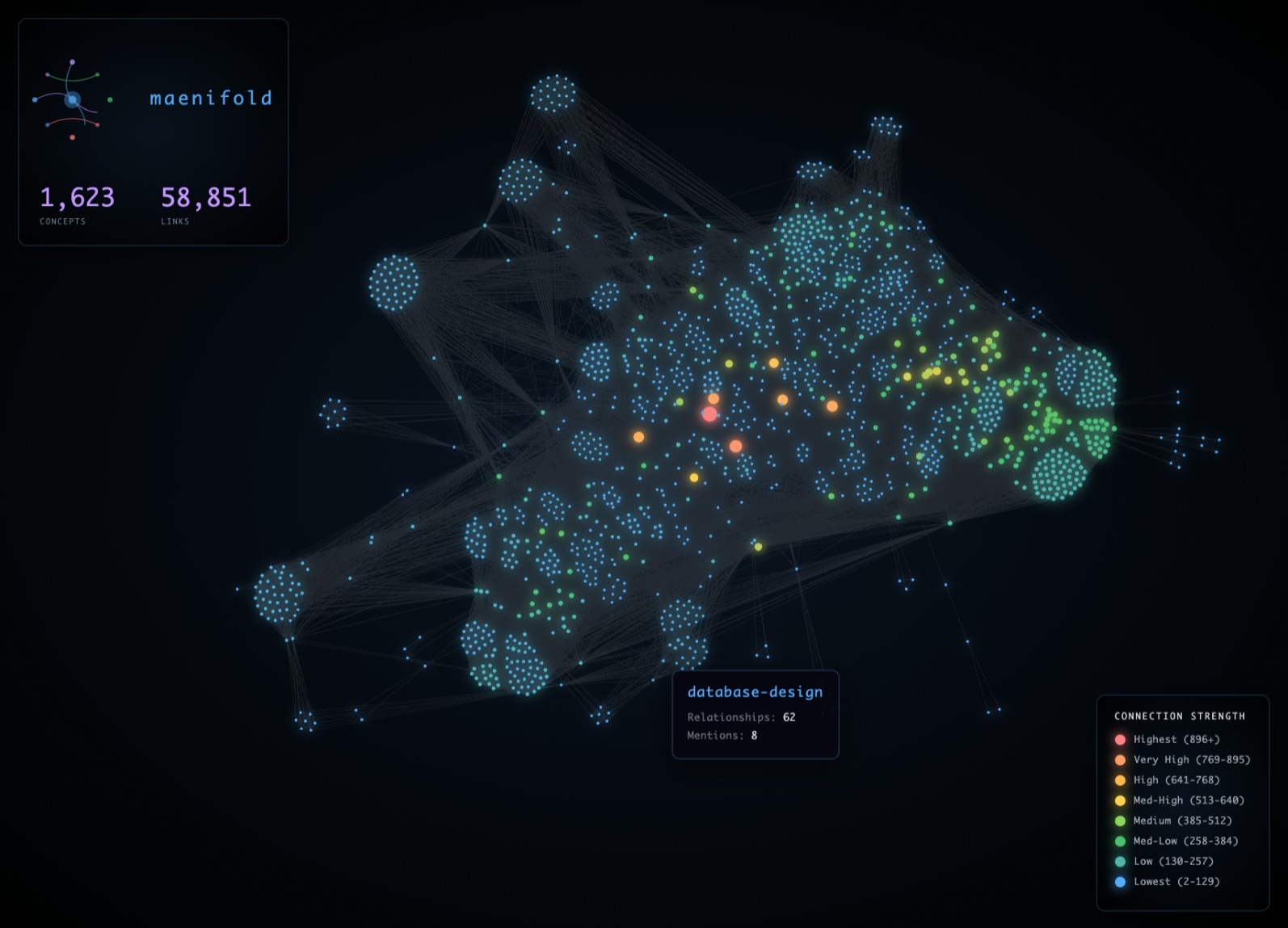maenifold
Never lose context.
maenifold's graph is the context window
Every [[concept]] becomes searchable. Every connection navigable.

Test-time reasoning infrastructure
Sequential thinking, workflow orchestration, and multi-agent coordination
🔄
Sequential Thinking
Multi-step reasoning with revision and branching. Test-time compute for systematic problem-solving.
🎭
30 Workflows
From deductive reasoning to design thinking—systematic methodologies with quality gates.
🎨
Multi-Agent
Coordinate agents in waves. PM preserves context while sub-agents execute.
🔌
Hybrid Search
Semantic vectors + full-text with RRF fusion. Never miss exact matches or concepts.
break the conversation boundary
Every session builds on the last. Every agent learns from every other. Knowledge persists, compounds, and evolves.